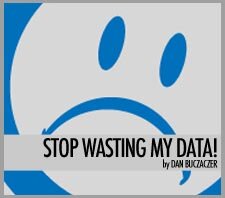Coming Disruptions
Posted by Brad Eshbach | April 27, 2012We live in an amazing time. A time when a photography app with 13 employees . A moment when a failing gaming startup can be saved (to the tune of $200 Million) by their digital clone of a classic board game. While indicative of current bubble/not-a-bubble arguments going on in every VC boardroom on earth, these are simply stories. Blog worthy deals that make for great headlines. These are the flashy tales most admired and what draws the attention of the masses. But, lets zoom out and think about the larger trend going on here: We are witnessing technology chip away at industries, norms and assumptions that have been in place for so long most people fail to notice just how broken they are.
This is a time for connecting the dots. A time when teams are building tools that threaten decades old businesses and centuries old institutions. These digital tools of today are being bootstrapped in dorm rooms and conceived on whiteboards spread throughout the Valley and the Alley and the Loop. They are hustling to dismantle the business models of the past and fix problems that have been bugging our collective consciousness for far too long.
That’s the nature of disruption.
The best disruptions are sneaky. Services that seem so benign in the beginning, they are ignored. Or the prevailing wisdom of the old guard blinds them to the new realities we live in. Nothing old is sacred and the mighty will fall. Even the goliaths of the digital world like Google and Facebook are threatened by complacency and the ever-present fear of missing the “next big thing.” Google missing social resulted in the laughably lovable Google+. Facebook lagged on mobile and had to blow that $1 Billion on a photo app.
Most don’t realize until it is too late. Fait accompli. It’s how Craigslist helped kill newspapers, email is killing the USPS, Netflix routed Blockbuster and why much of what you know now may be different in just a few years.
So, what’s next? A decade from now, which of our current industries will (in retrospect) seem absurd compared to our elegant new solution. Here are three (fairly obvious) places to pay attention over the next year.

Education
Why Now:
The financial crisis made one thing abundantly clear to the current batch of new graduates: A college education doesn’t hold the same guarantees of the past. We are graduating a generation that has an average $25,000 worth of student loan debt into a job market that will . Some call that a bubble.
We could argue for hours about the terrifying repercussions of our nation’s student debt, morbidly out of whack financial aid system, or growing animosity toward higher education but I’d rather not bum us all out. Instead, lets check out who is helping reimagine higher education and some challenges they will face.
Emerging Players:
Khan Academy is an educational portal that aims to let anyone “learn almost anything—for free.” What started as a way for Salaman Khan to tutor his cousins has quickly become the most lauded image of where education is going in the digital age. High quality videos walk students through math, science, art and more. Last weekend I re-learned (sorry Mrs. Robinson) long division and I don’t think I have ever been prouder.
iTunesU, Apples catchall education platform began as a dumping ground for class lectures, videos and supplemental material from some of the worlds leading institutes of higher learning. Place like Oxford, Stanford, and really all the ‘fords have made a insane amount of content available to the public. You can now take app development classes at Stanford, from your couch, for free. In addition, a new suite of textbook authoring and publishing tools created by Apple are helping address the struggle between students, growing backpacks and shrinking wallets.
The Hurdle:
While access to education was the hurdle most difficult to clear in the past, tools like Khan Academy and iTunesU demonstrate how quickly that is changing. A more contemporary problem maybe the influence of prestige in our education system. How will our long held standards of what makes a “good school” incorporate the next generation of digital learning platforms and institutions?

Television
Why Now:
THE disruption on everyone’s mind in 2012 is television. For good reason: How TV is delivered and consumed has remained almost entirely unchanged for decades. At a time when I have more computing power in my pants pocket than the space shuttle why is my cable box still stuck in 1994?
Emerging Players:
Steve Jobs was said to have “cracked” the TV puzzle shortly before his death. The rumor de jour is an Apple Television will be the device of Christmas 2012 and the idea of an app store for TV has just about everyone excited/hating. Netflix is not only changing the delivery system of television, they are resurrecting tv shows. Microsoft is doing anything they can to turn their Xbox 360 into the ultimate TV companion box. Even the old guard is starting to crack. Famously walled garden of HBO now offers their HBO GO app on just about any platform you desire. All this while a growing list of new comers like startup NimbleTV promise the holy grail of TV: access to all your shows, anywhere.
The Hurdle:
The biggest challenge facing anyone attempting to disrupt TV are the content providers. The entire industry is a rats nest of corporations that not only own one another, they control the channels that broadcast the signals and, in many cases, the high-speed Internet that makes most of these developing technologies possible. Will anyone be able to navigate this twisted world of back scratching well enough to force the move forward? This is when I miss Steve most of all. ![]()

Giving
Why Now:
Every week seems bring a new example of a trusted institution royally screwing something up. If the government isn’t blowing our tax dollars on Vegas ragers, groups like Invisible Children spend millions on PR campaigns to “raise awareness” of issues but do little actual good. People are no longer content giving money and crossing their fingers that it will have any real impact. This growing animosity towards institutions, paired with the newly mainstream understanding of crowdsourcing point to a coming shift in how we give.
Emerging Players:
Kickstarter now raises more money for the arts that the National Endowment for the Arts. Donors Choose is helping teachers buy the supplies they need and the government has failed to provide. Kiva can turn a few weeks worth of my coffee money into a life changing loan to a entrepreneur in the developing world. No longer does charity mean throwing money into a black hole and hoping it has an impact.
The Hurdle:
As crowdsourced charity strives to fill in the gaps left by government oversight and bureaucracy there will be a growing need for a system to identify, vet and organize causes that could benefit from this growing capital. How can we eliminate the barriers between givers and recipients? How can we make sure that money has the maximum effect?
Image Credit: Plutor, Oblivious Dude, and Dartmouth Now
2 Responses to “Coming Disruptions”
Leave a Comment
RSS feed for comments on this post · TrackBack URI




Completely agree. To add to this, I think the advertising and media industries are also in the midst of a significant change. It’s obvious to most, but many (mostly the large players with a big stake in it) don’t want the change.
I agree 100%, Gabriel.
The #1 threat to many of the failing business models of the past is complacency. Technology now develops at such a rapid pace it is nearly impossible for the major players to keep up. They must fully commit to understanding the future and how to leverage these impending cultural shifts or, they will be quickly replaced by someone who has.
Thanks for the comment!